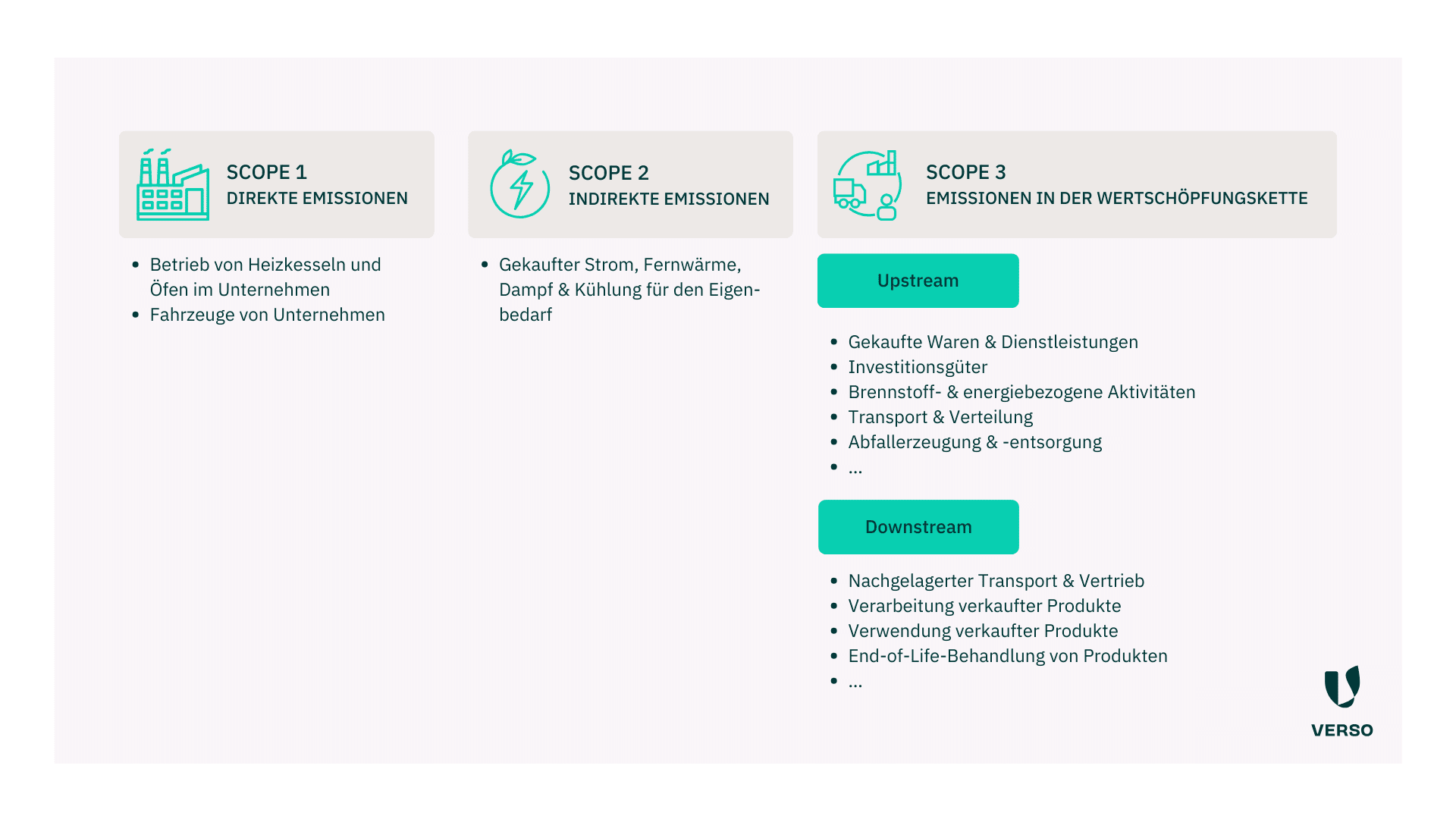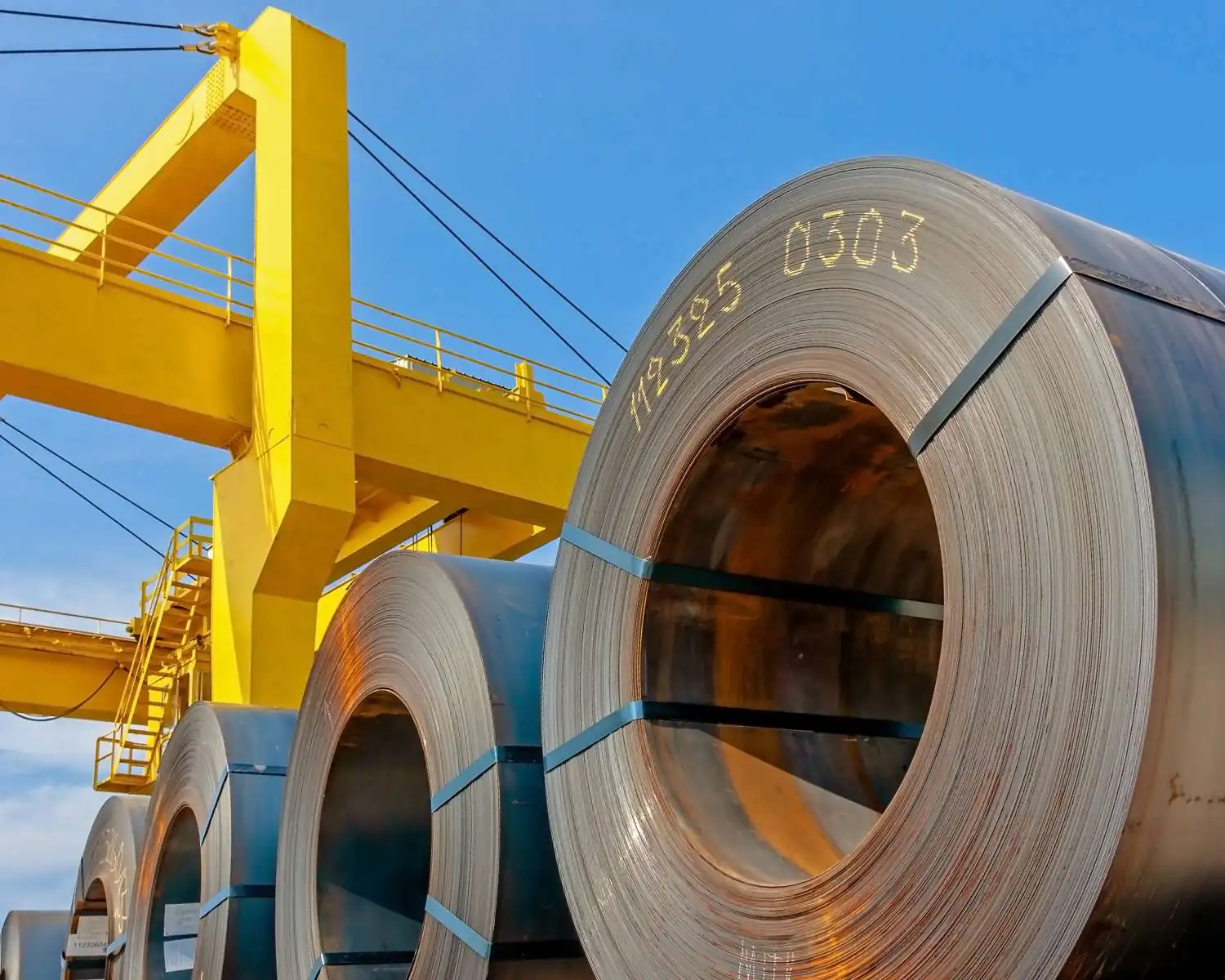
Step by step to Net Zero: how to develop a climate strategy for your company
The climate strategy for your company is imminent. But how to start – and where? Read this article to find out how to develop a suitable strategy for targeted decarbonization step by step!
Sustainability has become more of a focus for society, politics and business in recent years.
With the Paris Climate Agreement, the European Green Deal and its various implementation strategies such as CBAM, the EU Climate Change Act, CSRD or CSDDD, there is a whole range of targets, goals and guidelines, including for climate protection.
Nevertheless, there are warnings that the current course is not enough and that we will crack the 1.5° mark sooner than feared.
So is it better to bury our heads in the sand because it won’t help anyway?
No – it is now all the more important that everyone gets involved.
Companies in particular have a responsibility here.
But how and where to start?
Here is a step-by-step guide to developing a decarbonization strategy for your company!
1. recognize the challenge: Tackling the climate strategy with the right motivation
55% of the German managers surveyed in a Capgemini study stated that In the next ten years, climate change will pose the greatest challenges for the business model.
Climate change is no longer just around the corner – it already has both feet in the hallway.
For the first companies, it has even arrived in the living room and is smashing the fine china in the display case.
This is because climate change has long since had an impact on the first supply chains and business models.
So the challenge is clear: develop strategies and plans to reduce your own company’s emissions. At VERSO, we think it’s important not only to recognize the challenge – but also to find the right motivation to get started in a focused way and to persevere.
So here’s a question for you: What is your motivation behind developing a climate strategy? Perhaps for you it’s the traditional regulatory pressure.
For example, because you are obliged by the CSRD to disclose your climate strategy.
But perhaps the matter is also close to your heart regardless of the law – because you can see the advantages of a climate strategy or because you want to future-proof your company.
You may also want to arm yourself against rising costs due to CBAM and EU emissions trading, meet the growing demand for sustainable products or strengthen your employer branding.
Whatever it is, a clear motivation brings commitment throughout the company and ensures that your decarbonization plan is not just based on dry numbers.
2. create a CO₂ balance sheet or GHG balance sheet: The basis of your climate strategy
But it doesn’t work entirely without dry figures.
Once the commitment has been clarified, the second step is to lay the foundations for your decarbonization strategy.
This first requires an inventory in the form of a carbon footprint.
The Greenhouse Gas Protocol(GHG Protocol) provides you with guidance.
This is the most widely used standard for balancing greenhouse gas emissions.
Important when determining your emissions: Go really in-depth and get as much data as possible – from as many sources as possible!
How is your company structured?
What sources of emissions are there in your company?
Which of these sources are real emissions hotspots?
How many emissions are generated each year?
Work your way through your processes, products and activities step by step – right through to Scope 3.
Because even if it is easier to collect data for Scope 1 and Scope 2, Scope 3 emissions from the upstream and downstream value chain account for up to 80% of a company’s total emissions!
Tools such as our Climate Hub and Supply Chain Hub make it easier for you to record all climate data accurately and clearly.
By the way: If you want to know even more precisely, you can balance all of your company’s greenhouse gas emissions.
In addition to CO₂, a complete GHG balance sheet includes six other gases with greenhouse gas potential – including methane and nitrous oxide, for example.
3. set targets for the decarbonization strategy
The status quo is ticked off.
Now the journey can begin.
But – where are we actually going?
The next step is to set clear climate targets for your company.
Preferably in SMARTform, of course:
- Specific
- Measurable
- Ambitious
- Realistic
- Scheduled
Be sure to involve your company’s stakeholders here – because setting targets over the heads of employees, which they ultimately have to implement, can quickly backfire.
Here is a short checklist for the goals of your climate strategy:
- Our climate targets are science-based (support is provided, for example, by the SBTi sector guidelines)
- Our climate targets support the 1.5° target of the Paris Climate Agreement
- We have set a baseline year to benchmark our progress
- We have agreed a clear timeframe for our climate targets
When planning your reduction targets, also differentiate between:
- Long-term climate targets that go hand in hand with far-reaching structural changes in your company
- Short-term climate targets with which your company can achieve initial success quickly
- Absolute climate targets; i.e. quantitative targets to be achieved by time X
- Relative climate targets; i.e. the CO₂ reduction depends on key figures such as the number of employees or production figures
4. plan measures to implement the climate strategy
You are aware of your company’s emissions and climate hotspots and have set yourself clear decarbonization targets. Unfortunately, targets alone do not slow down climate change.
So in step 4, it’s time to plan your strategy so that you can take action.
Here are four tips from our side:
- Involve important stakeholders here again in order to find as many approaches and levers as possible.
- External consultants are also worth considering – they can help you uncover hidden potential for reducing emissions.
- Make sure that the measures are feasible.
No one is helped if you develop ambitious goals and radical measures that are unfortunately not compatible with reality. - Get a picture of the maturity levels of your stakeholders.
An example: In order to achieve the climate targets in the supply chain, suppliers should produce 100% with renewable energies.
Supplier A has had sustainability on its agenda for a long time and fulfills this requirement with ease.
Supplier B has not had much to do with sustainability so far, but wants to make the switch – your company can help here with training or support.
5. reduce emissions
If planned correctly, your climate strategy should work like a cycle: After the initial assessment with objectives and action planning, there is a “working phase” in which you let your measures take effect and pursue your goals.
After a year, you take stock and adjust your strategy to make it even more efficient.
The rule here is: good things take time.
If the decarbonization strategy is to have a real impact, it can run for ten years or longer in large companies with extensive processes and supply chains!
6. offset unavoidable emissions
Let’s be honest – CO₂ compensation is a controversial topic.
Some are in favor of it, others see it as greenwashing.
In principle, offsetting should really only be an option if you have fully exhausted all potential for reducing emissions.
If you decide to offset unavoidable emissions as part of your climate strategy, we would like to give you an important tip: Make use of reputable offsetting projects that
- are tailored to your company and
- whose effect is measurable.
The voluntary carbon market is not yet regulated by the state and is rather opaque.
Instead of legally binding criteria for validating carbon offsetting, there are only a number of private standards and registers with different quality criteria.
The result: major differences in quality within the climate protection projects on which the so-called CO₂ credits are based.
So take a close look.
In particular, Deutsche Umwelthilfe (DUH) has already successfully (and publicly!) sued several times against compensation through forest projects and reforestation, for example because the estimated forest area could not compensate for the amount of CO₂ emitted or the project did not run long enough to keep up with the lifetime of CO₂ in the atmosphere.
7. optimize climate strategy – and communicate with pleasure!
We briefly touched on this a moment ago: The decarbonization strategy is not a one-off project.
Once it gets rolling, it will run for many, many years.
After all, we still have a long way to go with climate change.
And a lot can happen in those years.
Check progress regularly.
What is going according to plan, where is there a hitch, where is nothing happening at all?
Check whether you will achieve your goals within the agreed time frame.
Talk to your stakeholders about where there is still potential. And please evaluate honestly whether your current strategy is actually of any use to the stakeholder on whom everything ultimately depends: nature! Last but not least: mistakes are part of the process – just like celebrating successes.
Communicate your progress, but also openly admit where you may have misjudged.
Show what your company wants to achieve and where you want to make improvements. Transparency, honesty and commitment are the drivers of sustainable transformation!
Let’s find your way towards Net Zero
Alongside sustainability reporting, planning and implementing the climate strategy is one of the most time-consuming tasks.
Thousands of data points and emission factors from the entire value chain are included in the calculation of the carbon footprint.
Many of these are not directly available to you and must first be obtained.
If you want to carry out the calculation correctly (i.e. in line with international standards such as the GHG Protocol), you need insight and perseverance.
And then there are doubts like: Do our climate targets even make sense?
Are our measures having any effect?
Can I communicate this and that milestone for our product now, or will I be accused of greenwashing?
The first climate strategy in particular is a real challenge.
VERSO helps you to get started – and to implement your decarbonization plan safely in the long term.
Interested?
Then take a look at how we can support you with your climate strategy:
* This information is summarized editorial content and should not be construed as legal advice. VERSO accepts no liability.
This might also interest you:
Subscribe to our newsletter!
Sign up and receive regular news about:
- Pragmatic all-in-one solution for ESG reporting, climate and supply chain management
- Individual advice from the VERSO experts
- Developed with expertise from 12+ years of sustainability management
- Trusted by 250+ customers


